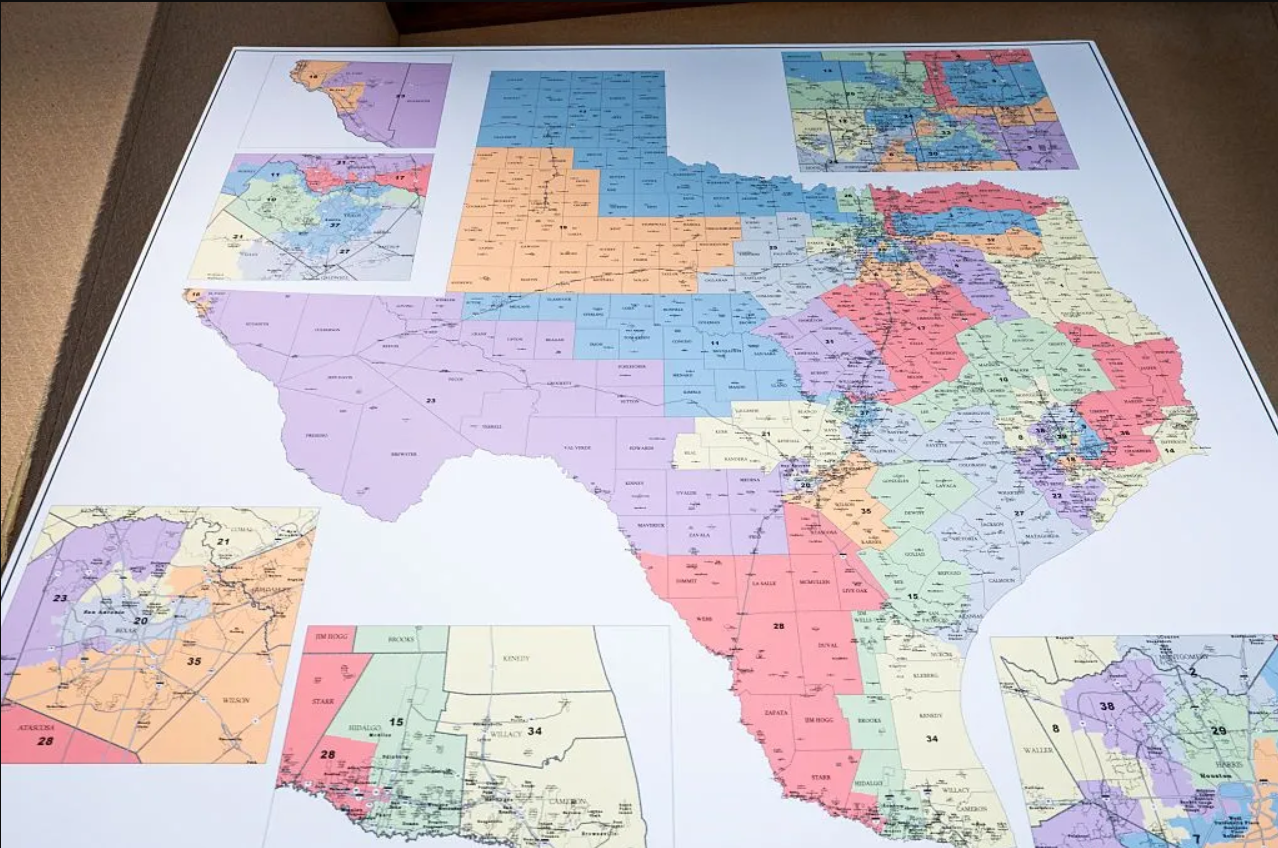California Texas Redistricting Battle: Why It Matters for US Politics
The California Texas redistricting battle is quickly becoming one of the most talked-about political fights in America. With over 70 million people living across these two massive states, the way congressional maps are drawn in California and Texas could change the balance of power in Washington, DC.
This battle is not just about drawing lines on a map, it’s about which political party will control the US House of Representatives in the years ahead. Both Democrats and Republicans are treating redistricting as a political weapon, and the outcome may define the results of upcoming national elections.
How the California Texas Redistricting Battle Started
The drama began in Texas earlier this year. The Republican-majority legislature pushed through a plan to add five new congressional districts designed to strengthen Republican control in Washington.
California, which leans Democratic, fired back by announcing its own redistricting plan. Lawmakers there proposed adding five Democratic-leaning districts, effectively canceling out the Republican gains in Texas.
The back-and-forth move is unprecedented and reveals how high the political stakes are. California’s plan will appear on the ballot in November, giving voters the chance to approve or reject it.
What is Redistricting and Why Does It Matter?
Redistricting is the process of drawing electoral boundaries for the 435 seats in the US House of Representatives. Typically, these boundaries are redrawn every 10 years after the census to reflect changes in population.
But in this case, both Texas and California are making mid-decade changes to gain political advantage. The way districts are drawn can determine whether voters are more likely to elect Democrats or Republicans, which makes redistricting one of the most powerful tools in American politics.

Currently, Democrats need just three more seats to flip the House. With such a narrow margin, every new district could tip the balance of power.
The Role of Gerrymandering
At the heart of the California Texas redistricting battle is the controversial practice known as gerrymandering, the manipulation of district boundaries to benefit one political party.
Both Republicans and Democrats use gerrymandering. While it is legal, it has faced countless lawsuits, especially when it appears to target minority communities in violation of the Voting Rights Act.
Critics argue that gerrymandering allows politicians to “pick their voters” instead of voters choosing their representatives. This often results in oddly shaped districts that group people based on voting tendencies rather than geography.
Trump’s Influence on the Redistricting Push
Former President Donald Trump has openly encouraged Republican-led states like Texas to redraw maps mid-decade. His goal is to secure Republican control of the House in upcoming midterm elections.
In Texas, Democrats tried to block the redistricting plan by leaving the state and denying quorum. But after two weeks, the governor ordered them to return under threat of arrest. Eventually, the plan passed with strong Republican support, creating five new GOP-leaning seats.
This aggressive move by Texas Republicans prompted California Democrats to respond with their own plan, intensifying the California Texas redistricting battle.
Is This Legal?
Yes, though controversial. The Supreme Court ruled in 2019 that federal judges cannot block political gerrymandering cases, meaning states have wide authority to redraw maps.
However, lawsuits could still challenge Texas’ plan if it is proven to dilute minority voting power. Civil rights groups are already preparing legal challenges, arguing that Texas’ redistricting could weaken the influence of Latino and Black voters.
California vs Texas: What’s Next?
California’s governor, Gavin Newsom, has promised to “fight fire with fire” in response to Texas. But unlike Texas, California has stricter rules meant to limit partisan gerrymandering. The 2008 law requires many redistricting proposals to go through public approval or nonpartisan commissions.

This means California’s proposed maps will go before voters in November, while Texas’ changes are expected to take effect sooner.
Other states are now considering similar moves. Democratic-led states like New York, New Jersey, and Maryland are exploring redistricting strategies, while Republican-led states such as Florida, Missouri, and Ohio are following Texas’ lead.
Why Smaller States Still Matter
Even smaller states like Delaware and Vermont, which only have one House seat each, could get pulled into the fight. While they don’t have the same power as Texas or California, shifts in these smaller states could still contribute to the overall national balance.
Experts say Republican-controlled states may have an easier time redrawing maps because Democrats face more legal hurdles and constitutional protections against partisan gerrymandering.
What’s at Stake in the California Texas Redistricting Battle
At its core, the California Texas redistricting battle is about more than just political maps, it’s about the future of American democracy.
The House of Representatives is already divided by razor-thin margins. Just a handful of new districts could decide whether Democrats or Republicans control investigations, legislation, and the nation’s political direction.
With lawsuits pending, new maps being drawn, and voters set to weigh in, this battle is far from over. What happens in California and Texas could shape not only the 2026 midterms but also the 2028 presidential election.

